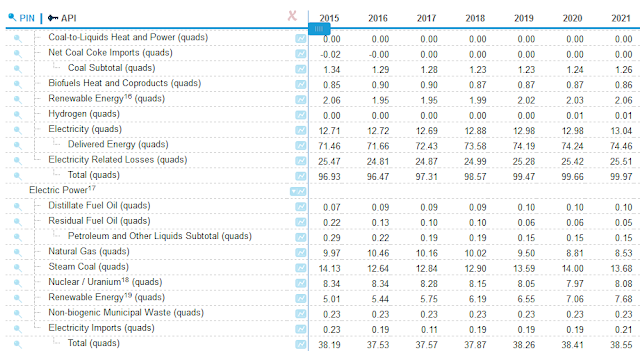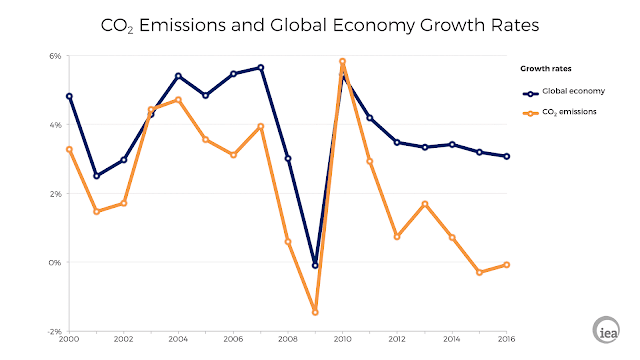Why the pause in global CO2 emissions growth is temporary and will start increasing again
by noreply@blogger.com (brian wang) from NextBigFuture.com on (#2GKFH)
The United States, had carbon dioxide emissions drop 3%, or 160 million tonnes from 2015 to 2016. The economy grew by 1.6%. The decline was driven by a surge in shale gas supplies and more attractive renewable power that displaced coal. Emissions in the United States last year were at their lowest level since 1992, a period during which the economy grew by 80%. This was a major part of emission stabilization for the world the last three years.
There was an over 11% drop in coal usage and natural gas has half the emissions renewables have over ten times less emissions.
The US energy information administration expects coal usage to start edging back up through to 2020.


Natural gas prices are projected to increase over the next couple of years.
What will not happen
The recent stabilization in global emissions hasn't caused CO2 levels to stabilize. The ocean and land sinks for CO2 currently offset only about 50 percent of the emissions. So the equivalent of 50 percent of the emissions is still accumulating in the atmosphere, even with stable emissions. To stabilize CO2 levels would require roughly an immediate roughly 50 percent cut in emissions, at which point the remaining emissions would be fully offset by the sinks, at least for a while.
Eventually, additional emissions cuts would be required because the sinks will slowly lose their efficiency as the land and ocean start to saturate. A permanent stabilization at current levels therefore requires both an immediate 50-percent cut as well as a slow tapering thereafter, eventually approaching zero emissions.
Nextbigfuture indicates the obvious. There will not be an immediate 50% cut in CO2 emissions and global CO2 emissions will start to increase again in 2017 through 2020 and likely through 2030.
Read more










There was an over 11% drop in coal usage and natural gas has half the emissions renewables have over ten times less emissions.
The US energy information administration expects coal usage to start edging back up through to 2020.


Natural gas prices are projected to increase over the next couple of years.
What will not happen
The recent stabilization in global emissions hasn't caused CO2 levels to stabilize. The ocean and land sinks for CO2 currently offset only about 50 percent of the emissions. So the equivalent of 50 percent of the emissions is still accumulating in the atmosphere, even with stable emissions. To stabilize CO2 levels would require roughly an immediate roughly 50 percent cut in emissions, at which point the remaining emissions would be fully offset by the sinks, at least for a while.
Eventually, additional emissions cuts would be required because the sinks will slowly lose their efficiency as the land and ocean start to saturate. A permanent stabilization at current levels therefore requires both an immediate 50-percent cut as well as a slow tapering thereafter, eventually approaching zero emissions.
Nextbigfuture indicates the obvious. There will not be an immediate 50% cut in CO2 emissions and global CO2 emissions will start to increase again in 2017 through 2020 and likely through 2030.
Read more